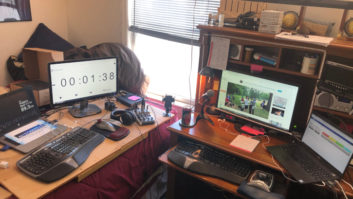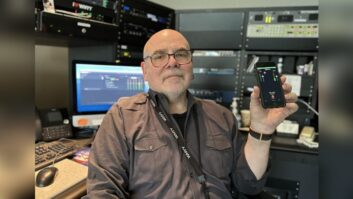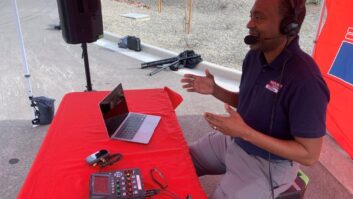
Gary Peterson writes, ‘Program directors at our other stations in the group heard the audio and recognized their potential for performing high-quality remotes.’ RAPID CITY, S.D. — I work for New Rushmore Radio, which owns and operates six radio stations in the Black Hills of western South Dakota. The New Rushmore Radio group evolved to its present size over a period of several years as a result of changes in FCC ownership limits and subsequent acquisitions. I was chief engineer at one of the ancestor radio stations in 1966 and followed through in the same capacity during this period of expansion until semi-retirement last July. Radio engineering remains in my blood and I continue to work for the group part-time.
With regard to broadcasting audio using remote codecs, I have seen the transition from POTS and GSM wireless transports, to the use of IP using 3G and more recently 4G LTE cellular wireless networks. To my knowledge, ISDN services have never been readily available or used in our area.
Commander
When I heard about Tieline codecs I asked around to see how they performed and heard very good reports. We purchased the first POTS-enabled Commander G3 field and rackmount codecs for KFXS(FM) 100.3 The Fox in 2008, in order to carry play-by-play ice hockey remotes.
In 2012 we purchased a pair of codecs for KKLS(AM) The Hills 97.5 FM in order to do play-by-play baseball, football and basketball remotes. We are in the process of transitioning from a legacy POTS dial-up interface to the Tieline system, which will be configured for unattended sports remotes.
We have had a lot of success broadcasting ice hockey for hundreds of hours from venues up to 1,000 miles away using POTS lines because these lines have always been available at the sports venues. The Tielines provide studio-quality audio over POTS that is highly superior to analog POTS systems using voice couplers or studio hybrids. The POTS connections are stable and reliable over long time periods and our on-air announcers love the Tieline codecs for their ease of use. The return audio path is used to communicate with announcers and give cues to anyone doing any type of remote broadcast.
When we bought the first pair of codecs, the program directors at our other stations in the group heard the audio and recognized their potential for performing high-quality remotes. They would often request to borrow them for nonsports remotes when they weren’t in use for play-by-play broadcasting.
Due to the demand for the Tieline units, we purchased another pair of Commander field and rack codecs and an annual purchase was made until now each station has its own set. All codecs are fitted for POTS and four of the six field units are fitted with wireless 3G modules.
Today, around 50 percent of our remote broadcast time would involve play-by-play sports and the rest would include a mix of commercial sponsorship, charity and public service related broadcasts. Due to the rollout of 4G LTE cellular networks and the congestion we sometimes experience over 3G connections, we recently purchased two Tieline 4G LTE USB modules. This allows us to connect using Verizon 4G LTE modems and has been a welcome addition to our broadcast arsenal. Over time, I foresee the purchase of more 4G-capable USB modules to increase our wireless remote capability.
Whenever possible we test venues in advance and we know that 3G and 4G will work most of the time within the immediate area. Cellular coverage can be marginal at times, however, particularly at large events where a large number of people are using data and in some terrain-challenged areas. We normally use POTS if it’s available in those situations.
The Commander field codecs certainly are tough. This year we experienced an unfortunate incident during a remote broadcast when a lady lost control of a rental car she was driving and crashed into our table outside a local restaurant from which we were broadcasting. The remote gear was on the table and went flying. Unfortunately our announcer suffered a broken wrist and ended up in the hospital. As for the equipment, a set of headphones was totally destroyed, but apart from a scratch or two, the Tieline codec hasn’t missed a beat.
Another notable event where the Tielines made their mark was the annual Sturgis Motorcycle Rally. This is a massive event where up to 300,000 people from around the nation converge for races, bike shows, vendor exhibits and outdoor concerts. We broadcast throughout the week-long event and the flexibility of the codecs allows us to go live from a variety of locations. We mainly use POTS because cellular data availability can be unreliable with so many people using data services.
Since we first bought the Tieline codecs we have done hundreds of remotes and they have proven their worth in the field many times over. Their robustness and reliability on the road is well-established and they will continue to play a major role in delivering our radio group’s programming from a variety of locations.
For information, contact Tieline in Indiana at (317) 845-8000 or visit www.tieline.com.











